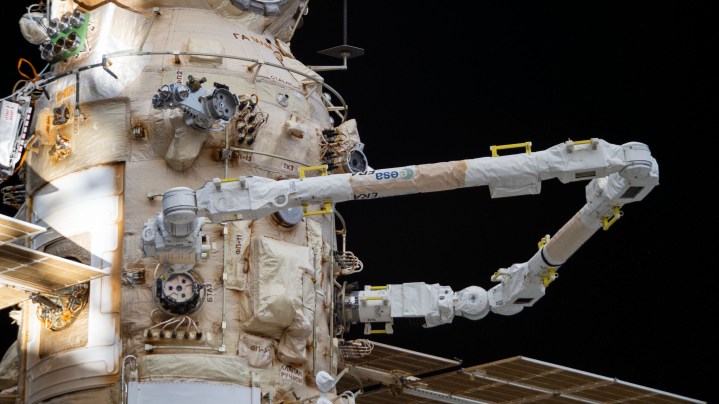A Russian spacewalk from the International Space Station had to be cut short this week when a problem developed with the spacesuit worn by cosmonaut Oleg Artemyev. Artemyev was working on the recently installed European robotic arm attached to the station’s Nauka module on Wednesday, August 17, along with fellow cosmonaut Denis Matveev during a spacewalk that had originally been planned to last six and a half hours.
Cosmonauts Oleg Artemyev and Denis Matveev safely concluded their spacewalk at 1:54pm ET today after Artemyev's spacesuit displayed abnormal battery readings. More: https://t.co/M90zS7JZzD pic.twitter.com/MAolxUX7mO
— International Space Station (@Space_Station) August 17, 2022
As reported by SpaceFlightNow, around two hours into the spacewalk mission, controllers noted a problem with the power system in Artemyev’s suit and immediately ordered him to re-enter the space station. The Russian flight director Vladimir Solovyov, based at a mission control center near Moscow, instructed Artemyev to “drop everything” and head straight back to the airlock.

Artemyev reached the airlock safely, and NASA representatives assured the public that he was not in any danger, though any issue with a spacesuit occurring during a spacewalk obviously has the potential to be serious.
Former Canadian astronaut Chris Hadfield described the instructions to drop everything as “urgent words you don’t want to hear from Mission Control” in a comment about the incident on Twitter.
Urgent words you don't want to hear from Mission Control: “Drop everything and start going back to the airlock right away, and connect to station power.” Luckily, the suit power failure was dealt with, and the crew is OK. https://t.co/3USmRqr3Nf pic.twitter.com/KFTxUBJ9Sv
— Chris Hadfield (@Cmdr_Hadfield) August 19, 2022
With Artemyev back inside the space station, Matveev continued to work alone for a period, but the Russian team then decided to end the spacewalk early, after four hours.
As reported by Universe Today, both cosmonauts were wearing Russian-made Orlan spacesuits, which are different from the U.S.-made Extravehicular Mobility Unit (EMU) spacesuits that U.S. and European astronauts use for spacewalks from the ISS. NASA confirmed that the problem with Artemyev’s spacesuit was a battery power issue that meant the suit was showing “abnormal battery readings.”
For safety, the European robotic arm that the pair were working on was put into a safe configuration, and there are further spacewalks planned to continue work on it over the next few months. This work will be done by Russian cosmonauts and European Space Agency astronauts, as the arm is part of the Russian segment of the space station.



